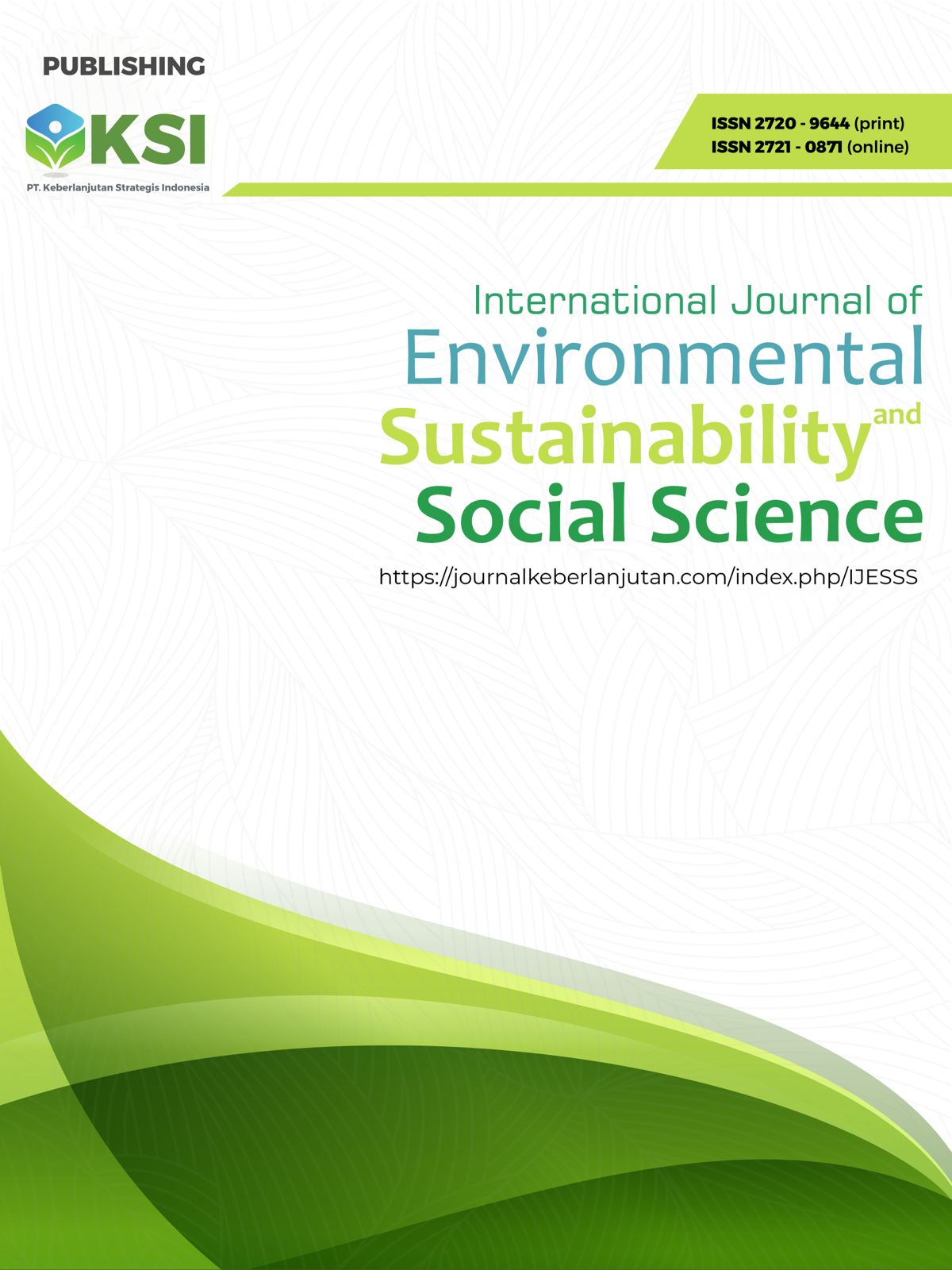Cooperation Performance of Nusa Cendana University in 2019-2023
DOI:
https://doi.org/10.38142/ijesss.v6i3.1423Keywords:
Cooperation Performance, Higher Education, Nusa Cendana University, Public Administration, Supporting and Inhibiting FactorsAbstract
This study aims to analyze the performance of cooperation of Nusa Cendana University in the last five years (2019–2023), and to identify factors that support and hinder the effectiveness of the implementation of the cooperation. The study used a qualitative approach with an instrumental case study method, and was conducted at Nusa Cendana University, Kupang. Informants were determined purposively from three faculties representing the categories of high (FKIP), medium (FST), and low (FISIP) cooperation performance. The results of the study show that in general, Nusa Cendana University has established various forms of cooperation at the university, faculty, and study program levels. However, there are disparities in the performance of cooperation between work units, as reflected in the number of cooperation documents and the level of implementation of cooperation agreements (MoU, MoA, IA). The most dominant cooperation is carried out in FKIP, while FISIP and postgraduate programs show relatively low achievements. Factors that influence cooperation performance include ability and motivation factors at the study program level. Supporting factors include: faculty leadership initiatives, availability of regulations and guidelines for cooperation, collaborative experience, and active partner networks. Inhibiting factors include the lack of an integrated coordination system, limited human resources, low administrative literacy, and no specific cooperation budget. The study recommends strengthening institutional systems, enhancing HR capacity at the study program level, and developing measurable follow-up strategies. Optimizing these aspects is expected to improve Nusa Cendana University's cooperation performance more effectively and sustainably.
Downloads
References
Ansell, C., & Gash, A. (2008). Collaborative governance in theory and practice. Journal of Public Administration Research and Theory, 18(4), 543–571. https://doi.org/10.1093/jopart/mum032
Bouckaert, G., & Halligan, J. (2008). Managing performance: International comparisons. Routledge.
Bryson, J. M. (2011). Strategic planning for public and nonprofit organizations: A guide to strengthening and sustaining organizational achievement (4th ed.). Jossey-Bass.
Dunn, W. N. (2003). Pengantar analisis kebijakan publik. Gadjah Mada University Press.
Fauzi, A., & Nugroho, H. A. (2020). Manajemen kinerja sektor publik. Prenadamedia Group.
Frederickson, H. G. (1997). The spirit of public administration. Jossey-Bass.
Grindle, M. S. (1997). Getting good government: Capacity building in the public sectors of developing countries. Harvard Institute for International Development.
Gulick, L., & Urwick, L. (Eds.). (1937). Papers on the science of administration. Institute of Public Administration, Columbia University.
Hood, C. (1991). A public management for all seasons? Public Administration, 69(1), 3–19. https://doi.org/10.1111/j.1467-9299.1991.tb00779.x
Kooiman, J. (2003). Governing as governance. SAGE Publications.
Kusek, J. Z., & Rist, R. C. (2004). Ten steps to a results-based monitoring and evaluation system: A handbook for development practitioners. The World Bank.
Lynn, L. E., Heinrich, C. J., & Hill, C. J. (2001). Improving governance: A new logic for empirical research. Georgetown University Press.
Mardiasmo. (2009). Akuntansi sektor publik. Andi.
McLaughlin, J. A., & Jordan, G. B. (1999). Logic models: A tool for telling your program's performance story. Evaluation and Program Planning, 22(1), 65–72. https://doi.org/10.1016/S0149-7189(98)00042-1
Moore, M. H. (1995). Creating public value: Strategic management in government. Harvard University Press.
Organisation for Economic Co-operation and Development (OECD). (2002). Glossary of key terms in evaluation and results based management. OECD Publishing. https://doi.org/10.1787/9789264034921-en
Organisation for Economic Co-operation and Development (OECD). (2007). Performance budgeting in OECD countries. OECD Publishing. https://doi.org/10.1787/9789264034051-en
Osborne, D., & Gaebler, T. (1992). Reinventing government: How the entrepreneurial spirit is transforming the public sector. Addison-Wesley.
Rosenbloom, D. H. (1989). Public administration: Understanding management, politics, and law in the public sector. Random House.
Scott, W. R. (2001). Institutions and organizations (2nd ed.). SAGE Publications.
Simon, H. A. (1946). The proverbs of administration. Public Administration Review, 6(1), 53–67. https://doi.org/10.2307/972837
Simon, H. A. (1957). Administrative behavior (2nd ed.). Macmillan.
Downloads
Published
Issue
Section
License
Copyright (c) 2025 Melinda TALLAK, William DJANI, Ajis Salim Adang DJAHA

This work is licensed under a Creative Commons Attribution-NonCommercial 4.0 International License.
Creative Commons Attribution-NonCommercial 4.0 International License.



















